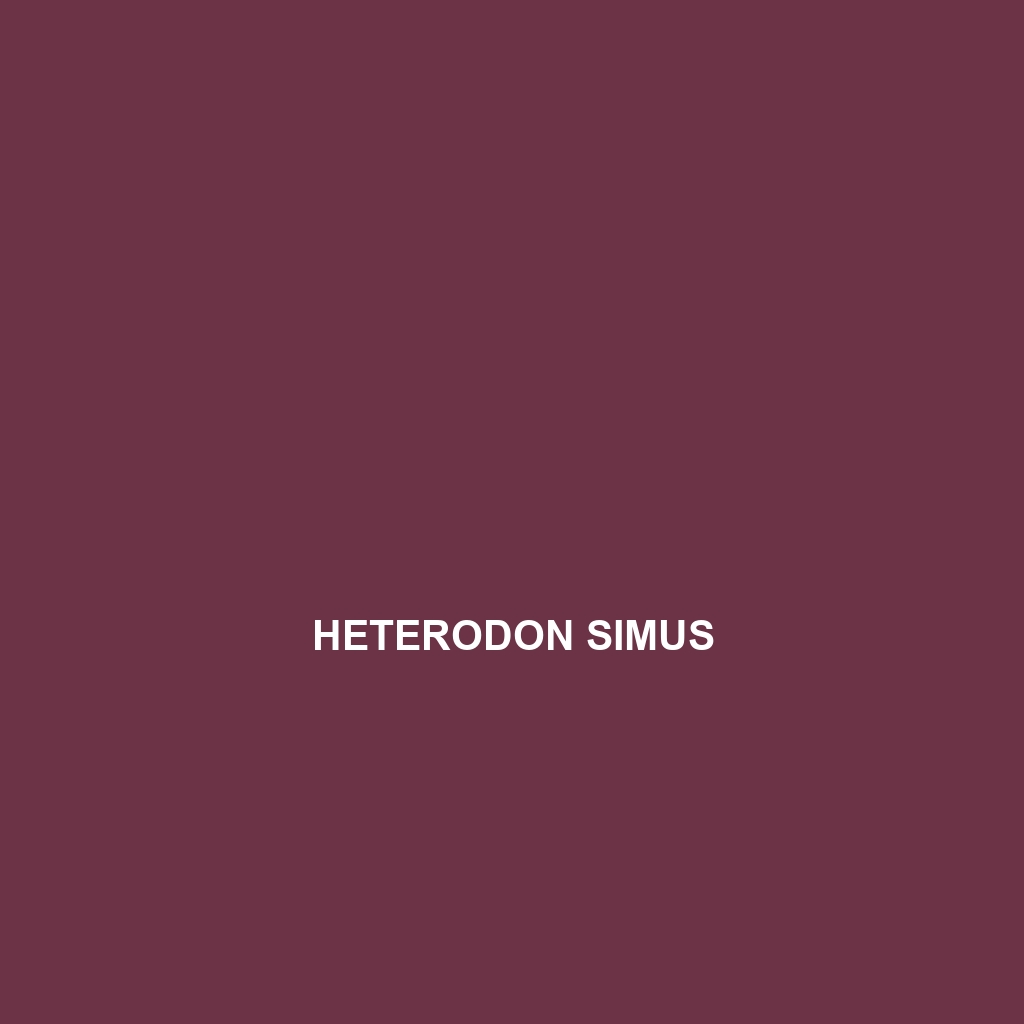Common Name
Eastern Hog-nosed Snake
Scientific Name
Heterodon platirhinos
Habitat
The Eastern Hog-nosed Snake, or Heterodon platirhinos, primarily inhabits a variety of environments across North America, particularly in the eastern United States and parts of Canada. This adaptable species can be found in temperate forests, sandy grasslands, and savana-like habitats. They prefer areas with loose soil which allows for easy burrowing, and they thrive in regions that provide abundant cover and a rich diversity of prey. The climate in these areas ranges from humid to semi-arid, typically characterized by warm summers and cool winters, making them well-suited for life in these ecosystems.
Physical Characteristics
The Eastern Hog-nosed Snake typically reaches lengths between 24 to 36 inches (61 to 91 cm), although some individuals can grow up to 48 inches (122 cm). This species is recognized for its distinctive, flattened head, which is somewhat hog-like in appearance, giving rise to its common name. The body is robust and features a colors that can vary widely, ranging from gray to brown and even black, often adorned with dark blotches or spots, which aid in camouflage. Notably, their ventral side is lighter and may be yellow or white, providing a stark contrast to their dorsal coloration. Juveniles may display a more vivid coloration which tends to fade as they mature.
Behavior
The Heterodon platirhinos is primarily diurnal, meaning it is active during the day, although it may exhibit some nocturnal behavior in particularly hot months. This snake exhibits fascinating behaviors, particularly when threatened; it is known for its dramatic “playing dead” act, rolling onto its back, opening its mouth, and emitting a foul smell to deter predators. In terms of social interactions, these snakes are generally solitary but will come together during mating season, which typically occurs in late spring to early summer. Their mating rituals can involve intricate courtship displays, where males may engage in combat or demonstrate their strength to attract a female.
Diet
The diet of the Eastern Hog-nosed Snake is primarily composed of amphibians, particularly frogs and toads, although they are known to consume small mammals and reptiles as well. They are classified as carnivores and utilize a unique hunting strategy characterized by their ability to flatten their bodies and striking techniques that can surprise their prey. Interestingly, they often use their sense of smell to locate food and will sometimes employ a method of burrowing into the ground to ambush unsuspecting prey.
Reproduction
The reproductive cycle of Heterodon platirhinos typically begins in the spring, with mating occurring shortly after emerging from hibernation. The gestation period lasts approximately 6 to 10 weeks, leading to the birth of live young (ovoviviparous), with females giving birth to anywhere between 6 to 37 offspring. The young are independent immediately after birth and are born fully formed, measuring around 6 to 10 inches (15 to 25 cm) long. Parent snakes exhibit little to no parental care post-birth, allowing the offspring to fend for themselves in their environment.
Conservation Status
The Eastern Hog-nosed Snake is currently listed as Least Concern according to the IUCN Red List. However, it faces threats from habitat loss due to urbanization, agriculture, and road mortality. Conservation efforts are focused on preserving the natural habitats of these snakes and raising awareness about their ecological role. Education initiatives aim to prevent misunderstanding and fear among people, which can lead to unnecessary killings, given that this species is non-venomous and primarily relies on bluffing its way out of danger.
Interesting Facts
One intriguing aspect of the Heterodon platirhinos is its exceptional ability to mimic a venomous snake, such as the North American rattlesnake, by flattening its body, creating a hissing sound, and shaking its tail. Additionally, this species is notable for its unique ability to tolerate toad venom, allowing it access to a food source that many other snakes cannot utilize. Their playful antics and defensive posturing make them a fascinating subject for wildlife enthusiasts and researchers alike.
Role in Ecosystem
The Eastern Hog-nosed Snake plays a vital role in maintaining ecological balance within its habitat. As a predator, it helps control populations of frogs, toads, and small mammals, contributing to the health of these animal communities. In turn, it also serves as prey for larger predators such as birds of prey, raccoons, and larger snakes, making it an integral part of the food web. Furthermore, the presence of Heterodon platirhinos indicates a healthy ecosystem, as they require undisturbed habitats with sufficient prey availability to thrive.
This HTML-structured species description provides detailed and SEO-optimized content about the Eastern Hog-nosed Snake, highlighting key aspects relevant to ecology, behavior, and conservation status.
